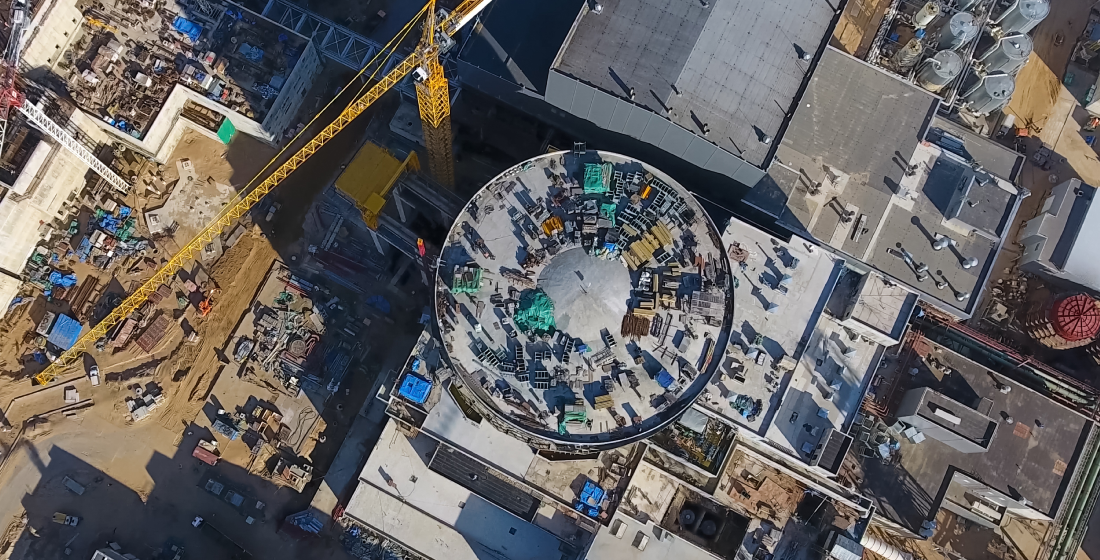Janus: Forecasting a bumpy, but manageable, ride
Exporters, banks and insurers are going to be impacted by future uncertainties and driven by past problems. What does 2023 trade and export finance look like from the perspective of the insurance market? Here, like Janus, we look back in order to look forward. It’s going to be a bumpy one, but there is room for optimism too.

Janus – the two-faced Roman god looks backwards and forwards and this year bids welcome to the new world in which phrases like ‘global economic slowdown’, ‘inflation stickiness’ and ‘stagflation’ are still being debated and higher interest rates and currency fluctuations are the renewed ‘new normal’. Is there room for optimism in financing international trade?
January is the cruellest month in the renewals market from the insurance industry’s own perspective. That’s when most policies come due, though the challenges usually become evident in November. In the credit and political risk insurance market (CPRI), the can of claims (and reschedulings) that had been kicked down the road since the pandemic is still rolling, but for some markets and credits, there's a concern that the proverbial undead could rear their heads as corporate zombies begin to roam, and ECAs are also facing the challenges of geopolitical and macroeconomic uncertainties.
“Insolvencies in 2023 look like they are going to be way beyond 2019 levels,” warns one private insurer. He expects that reinsurance renewals will also be hard hit because the property catastrophe business (‘property cat’) has been badly impacted by last year’s storms and the resultant premiums, he says, are “sky high”. How could this affect the CPRI market?
The private market has been affected in several ways. First, anecdotally, some insurance companies had reallocated capital to property cat at the expense of other lines including, amongst others, credit and surety, because the property cat premiums had been elevated, Hurricane Ian in September 2022 being one of the primary drivers. Then came the winter storms and floods across the US. Some mid-sized reinsurers who had made a move from other lines of business to property cat may now be facing a squeeze.
Second is the strong dollar, which means insurance companies that define limits in Swiss francs or euros are facing finite capacity and some huge risks. “Now you can get the strange situation that people are looking to credit insurance companies for more coverage because they see stormy weather as well and are looking for credit insurance coverage too. Credit insurers are saying, ‘yes, we're willing to oblige’, but they want quality risks. Reinsurers are also wanting quality risk, but they just don’t want too much overall.”
Will exporters and banks be affected by this in 2023? Richard Wulff, executive director at International Credit Insurance & Surety Association (ICISA), says that conditions are holding up. “Credit insurers are doing everything to keep their capacity up and to satisfy the justified needs of their clients,” Wulff says.
The fallout from the Ukraine war on the insurance sector, for instance, has principally been on its influence on energy prices and inflation rather than directly in terms of trade risks underwritten. If you pay twice as much for your energy needs though, if you're a chemicals company, for instance, it's not brilliant. And the other dimension is rising interest rates. This is impacting everyone, including insurers and reinsurers who need to redefine their cost of capital.
Reinsurance pricing is still holding up though, but primary pricing is likely to climb as the situation unfolds. Wulff remains optimistic for the coming year. “The optimism comes from the fact that everyone is prepared. And that's not only the insurers and the sellers and the buyers, but also governments. People are actually working together, and that's new, and optimistic.”
Vigilant risk management will also remain key for banks and corporates in trade. “Global economic slowdown isn’t all bad for trade finance,” says Michael Vrontamitis, independent consultant. “It’s not great for trade, but expect that tightened liquidity and increased risk will lead to healthy margins for trade finance businesses. Any lapse in risk control could wipe out profitability for some players.”
Currency challenges and the impact on recoveries
Meanwhile, rising US interest rates and the relative strength of the US dollar have already affected, and could continue to affect, credit insurance claims against buyer default for several reasons. Broadly, higher interest rates depress activity and can lead to increased insolvencies. In developed markets, historically low interest rates plus government support during the pandemic will have led to the creation of some ‘zombie’ companies whose demise has been artificially postponed.
With the existence of more nominal dollar debts, those are worth more in debtor country currencies and this phenomenon can be observed in both developed and developing countries. It is one extra challenge for developing countries that could continue to hurt economic activity.
“The number one issue affecting trade (and thus credit insurance) in 2023 could be the currency depreciation in both high-income and emerging markets, or rather the fiscal and monetary action by governments and central banks,” says Ahmed Madkour, director Recovery Advisers, a claims and recoveries specialist [which manages claims for ECAs and private insurers].
He warns that a second run of COVID across the globe could affect supply chains again. “As most claims [we] manage are denominated in US dollars, the deteriorating conversion rates from local currencies make rescheduling and restructuring more and more difficult to honour, and even if the debtors are willing to repay the debt, Recovery Advisors has seen several cases where the repayment is further delayed by central banks, introducing fiscal or trade control and grasping to keep US dollars at home.”
As both oil and gas prices are recovering to pre-war levels, this will be less of an issue for 2023, as long as the supplies are secured, Madkour notes. “Trade is likely to be resilient as a whole, since the issues mentioned will eventually be reflected in transaction prices/ be priced in. However, as an exception to traditional trade patterns, projects and medium long term (MLT) transactions will be particularly at risk, as central banks find themselves stuck between a rock and a hard place. The strong dollar is forcing them to raise interest rates in support of their currencies, yet, it can push teetering economies into recession. Overall, other than in GCC countries, 2023 will probably be a challenging year for world trade.”
Sean Edwards, chair of International Trade and Forfaiting Association (ITFA) is more optimistic for the fate at the shorter end of financing international trade. “Trade finance is, of course, dependant to a degree on the health of the global economy which I believe will be subdued this year but not fall off a cliff,” he says. “However, trade finance has an innate resilience which, in the current economy, is underpinned by robust commodity prices that are unlikely to change significantly and by repricing pressure which will, unfortunately, hit some SMEs badly.”
China the biggest unknown
Most agree that economic uncertainty will remain high for trade, commodity, project and export finance for the coming year. “We aren’t out of the economic woods yet,” says independent economist, Rebecca Harding. “We have no idea what the impact on Chinese manufacturing of the end of COVID-19 lockdowns will be, and Russia-Ukraine is a destabilising factor in energy and food markets.” Her key message, though, is that most uncertainty will be centred around China.
“How 2023 plays out will be determined by the speed in which its economy can get back on its feet post COVID and the impact on global supply chains, how the tensions between it and Taiwan play out (it won’t invade, I don’t think), but it does mean that the Taiwan Strait, the South China Sea and the Indo-Pacific, as massive global trade routes, are going to be potentially destabilising vectors for global trade. The biggest thing, of course, is China and the US approach to tech exclusion which it is taking. We don’t often see this as directly affecting trade or supply chains, but as China is increasingly locked out, this is almost bound to happen. “
“China’s re-opening is a long term positive for the global economy though it will add to the uncertainty through the first half of 2023 delaying any recovery and reducing the probability of rates falling sooner. The war in Ukraine provides further downside risk to a recovery,” adds Vrontamitis.
Nonetheless, as he notes: “Any benefits from the geopolitical situation will not be equally shared. Liquidity will naturally gravitate towards investment grade risks and developed countries, leading to increased costs and reduced financing availability for emerging markets and smaller companies. I am optimistic around the opportunities in the market, but the ride is certainly going to be bumpy.”
Janus leaves doors closed for peace
The last word should go to the Greek historian, Plutarch. In the Life of King Numa, he wrote: “[Janus] also has a temple at Rome with double doors, which they call the gates of war for it always stands open in time of war, but is closed when peace has come. The latter was a difficult matter, and it rarely happened, since the realm was always engaged in some war, as its increasing size brought it into collision with the barbarous nations which encompassed it round about. But in the time of Augustus it was closed, after he had overthrown Mark Antony, and before that, when Marcus Atilius and Titus Manlius were consuls, it was closed for a short time, then war broke out again at once, and it was opened.”
It sounds contradictory, but from the perspective of Janus and world geopolitics, let’s hope those proverbial temple doors can be closed in 2023.
Become a subscriber today for unrestricted access to the best export, trade and commodity finance analysis available.
Click here for information on the different packages available for you and your team
Exclusive subscriber-only content published last week:
Euler Hermes backs Egyptian rail project
The Egyptian National Authority for Tunnels has completed a deal to fund its new Green Line high speed rail project with support from the Ministry of....Read on here
Allego kicks off 2023 with refinancing syndication
Allego – the Netherlands-based EV charging network developer, owned 78% by Meridiam – has kicked of 2023 by syndicating a €400...Read on here
Korean ECAs to cover 5 new LNG carriers
Knutsen Group, the Norwegian shipping firm, has sealed financing for five new LNG carriers to be built in the Korean shipyards. The Korean ECAs, Kexim...Read on here
Metbassta solar project loan nears close
The financing backing the 100MW Metbassta solar project in Tunisia - sponsored by Emirati renewables developer AMEA Power via SPV Kairouan solar...Read on here
Unique Meghnaghat IPP taps DFI/ECA support
Asian Infrastructure Investment Bank (AIIB) has approved $110 million for a 584MW greenfield gas-fired combined-cycle gas turbine (CCGT) plant in...Read on here
Project One debt signed
INEOS Olefins Belgium has signed on the partially ECA-backed debt facilities for its €4 billion Project One greenfield olefins complex in...Read on here
Societe Generale, Standard Chartered lend €146m to Uganda with ICIEC guarantee
Societe Generale has acted as MLA and Standard Chartered as bookrunner on a €146 million ($155 million) credit facility to the state of...Read on here
Haryana rail project loan garners DFI support
The AIIB has approved a $128 million loan for the Haryana Orbital Rail Corridor (HORC) Part A project in northern India. The scheme, which is in two...Read on here
AIIB approves Egyptian metro loan
The AIIB has approved a €250 million ($265 million) loan for the Alexandria Metro project in Egypt. Three consortia are prequalified for the...Read on here
More details emerge on Singrobo-Ahouaty hydropower plant
Financing closed last month for the 44MW Singrobo-Ahouaty hydropower plant on the Bandama River – the first hydro IPP in the country.Themis...Read on here
ADNOC shortlists for Mirfa seawater treatment scheme
ADNOC is rumoured to have shortlisted two final bidders for its seawater nano-filtration oilfield scheme in Mirfa. Marubeni is said to have been...Read on here





